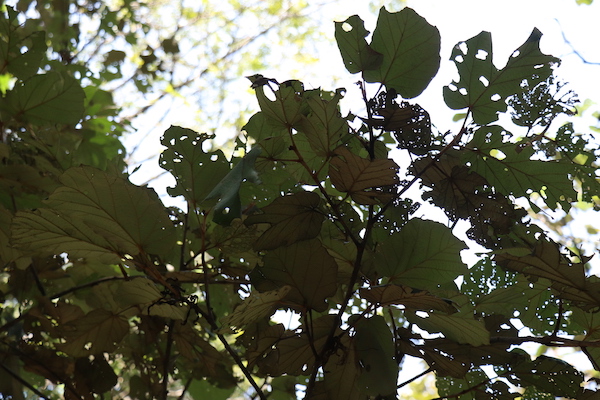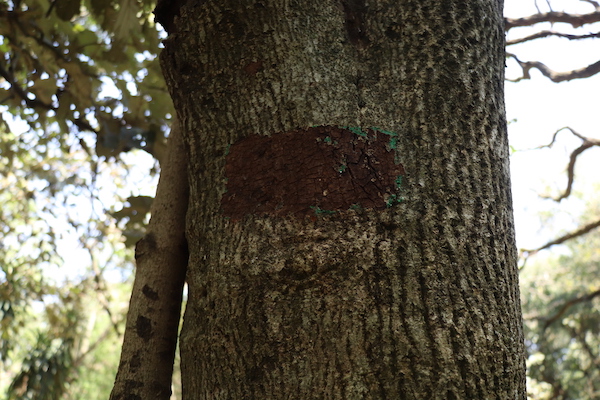Pterospermum acerifolium (L.) Willd.
| Kannada Name : | Kanaka champaka |
| Common Name : | Bayur tree |
| Family Name : | Malvaceae |
| Scientific Name : | Pterospermum acerifolium |
| Species Type : | Indigenous |
| Phenology : | Evergreen |
| Conservation Status : | Least concern |
| Flowering Period : | January - April |
| Fruiting Period : | January - April |
| Origin : | Southeast Asia |
Uses
They can be used as actual dinner plates or as packaging and storage by wrapping materials inside. In India they are shaped into regular dinner plates and soup bowls on moulds, some even stitched together with twigs. In Burma they are also used to dry tobacco upon. The leaves can also serve as a primitive method of re-enforcing roofs and preventing leaks. The pubescent under surface of the leaves is said to stop bleeding and can be used as tinder for a means of sparking fires.
Description
Evergreen tree, 12-15 m tall; bark smooth, ash-coloured; branchlets ferruginous-tomentose. Leaves polymorphous, obovate to orbicular or oblong, cordate, grey-tomentose beneath, sometimes peltate at base, entire or sinuately lobed at apex, margin coarsely serrate. Inflorescence an axillary or solitary cyme. Flowers fragrant, pubescent, white. Fruit a capsule, oblong, 5-angled, woody and brown, tubercled. Seeds obliquely ovoid, compressed with a large membranous wing

